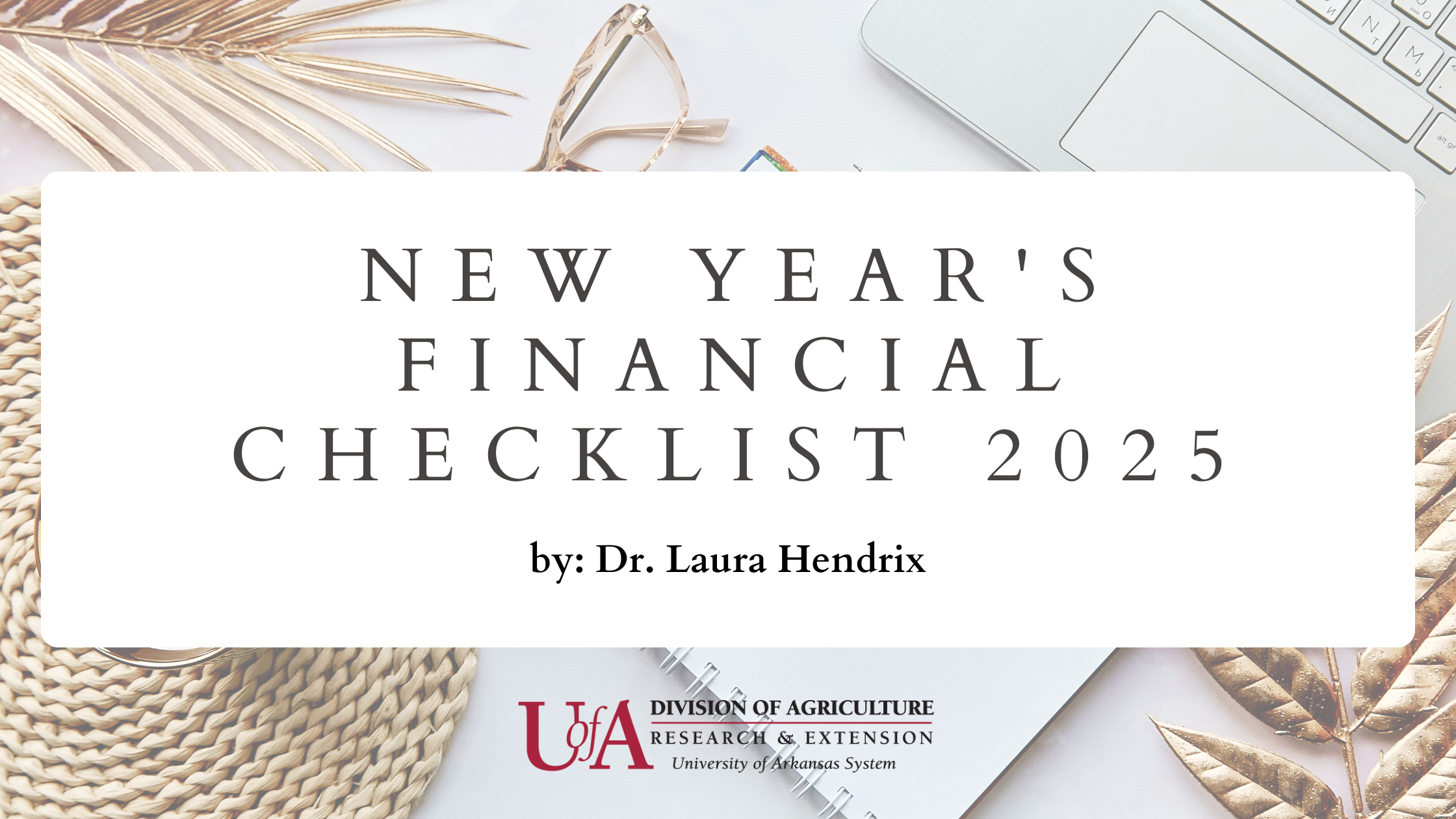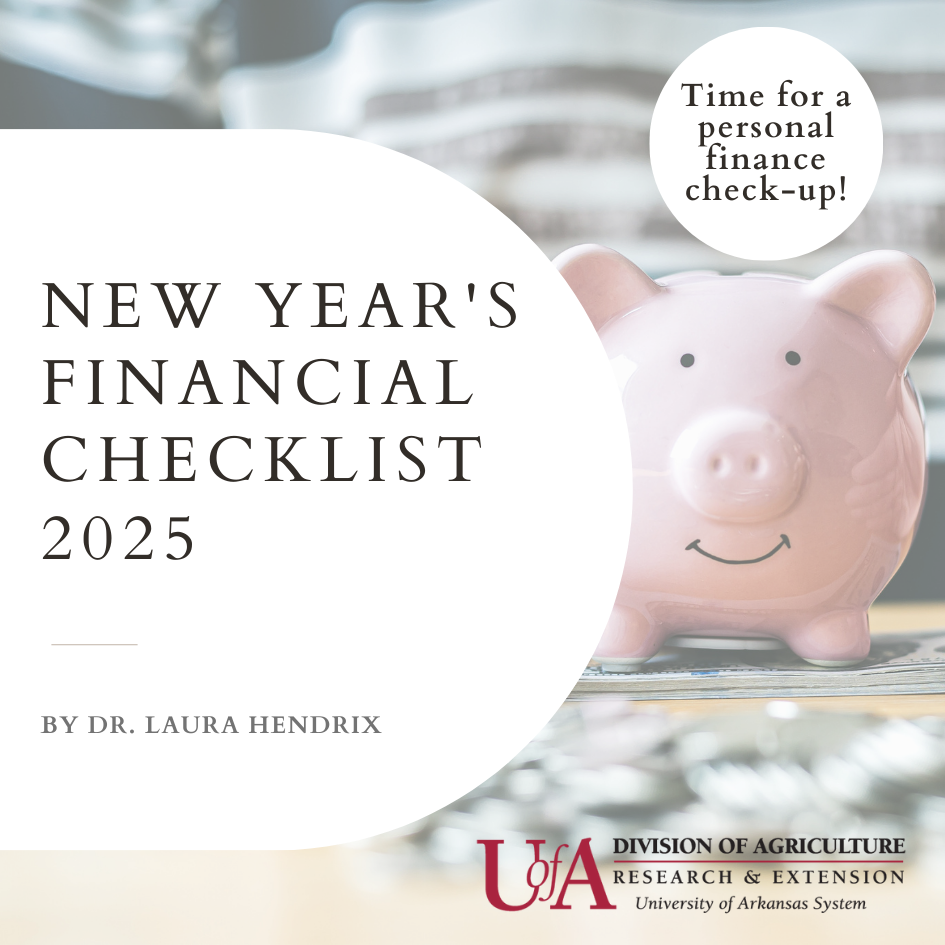
UAEX Money
Get financial tips from our personal finance expert, Dr. Laura Hendrix!
Happy New Year! As you set your resolutions, why not prioritize your financial health? Start the year off right with these expert tips to organize your money, reduce stress, and build a solid foundation for your financial future.
New Year's Financial Checklist 2025

As the new year begins, it’s the perfect time to take stock of your financial health. Just like a yearly medical check-up keeps your body healthy, a financial review can ensure you’re on track with your goals, reduce stress, and set you up for success. Here’s your step-by-step guide to assessing and improving your financial well-being.
Check Your Net Worth
Your net worth is like a snapshot of your financial health—it shows the value of what you own (assets) minus what you owe (liabilities). Knowing this number helps you track your progress over time and plan for the future.
How to Calculate:
- List Your Assets: Include items like the current value of your home, savings accounts, investments, and retirement funds.
- List Your Liabilities: Write down all debts, such as mortgages, credit card balances, student loans, and car loans.
- Do the Math: Subtract your total liabilities from your total assets.
Example: If your assets total $200,000 and your liabilities are $125,000, your net worth is $75,000.
Action Plan for the Year:
- Set a goal to increase your net worth by reducing debt or growing savings.
- Use free tools or worksheets (find links to FREE tools below!) to calculate and track your net worth over time.
Review Your Debt-to-Income Ratio
Your debt-to-income ratio measures how much of your income goes toward paying off debt each month. This can reveal if your debt load is manageable or needs attention.
How to Calculate:
- Add Up Your Monthly Debt Payments: Include credit card minimums, car loans, and other recurring consumer debt (exclude your mortgage).
- Divide by Your Monthly Income: Use your take-home pay after taxes and deductions.
- Get Your Ratio: Multiply the result by 100 to get a percentage.
Example: If your monthly debt payments are $400 and your take-home pay is $2,500, your ratio is 16% ($400 ÷ $2,500 × 100).
What Does It Mean?
- Less than 10%: Excellent—your debt is under control.
- 10%–20%: Manageable, but keep an eye on it.
- Over 20%: Time to reassess and prioritize debt repayment.
Action Plan for the Year:
- Focus on paying off high-interest debt first.
- Use online calculators like PowerPay to explore repayment plans and strategies.
Know Your Credit Score
You can find your credit score at AnnualCreditReport.com. Your credit score impacts your ability to borrow money and the interest rates you’ll pay. A high score can save you thousands of dollars on loans. Many banks and credit card providers offer free score monitoring, or you can purchase it for a small fee.
Tips for Improving Your Score:
- Pay bills on time, every time.
- Keep your credit utilization low—aim to use less than 30% of your available credit.
- Avoid opening too many new accounts at once.
Action Plan for the Year:
- Set up auto-pay for recurring bills to avoid missed payments.
- If your score is low, focus on building positive credit habits.
Create Your New Year’s Financial Goals
After reviewing your financial benchmarks, it’s time to set actionable goals.
- Increase Savings: Start an emergency fund or add to your existing one.
- Reduce Debt: Use the snowball or avalanche method to pay down balances.
- Plan for the Future: Start contributing to a retirement account or revisit your current plan.
Find free resources for managing your personal finances and explore more UAEX Money blogposts: